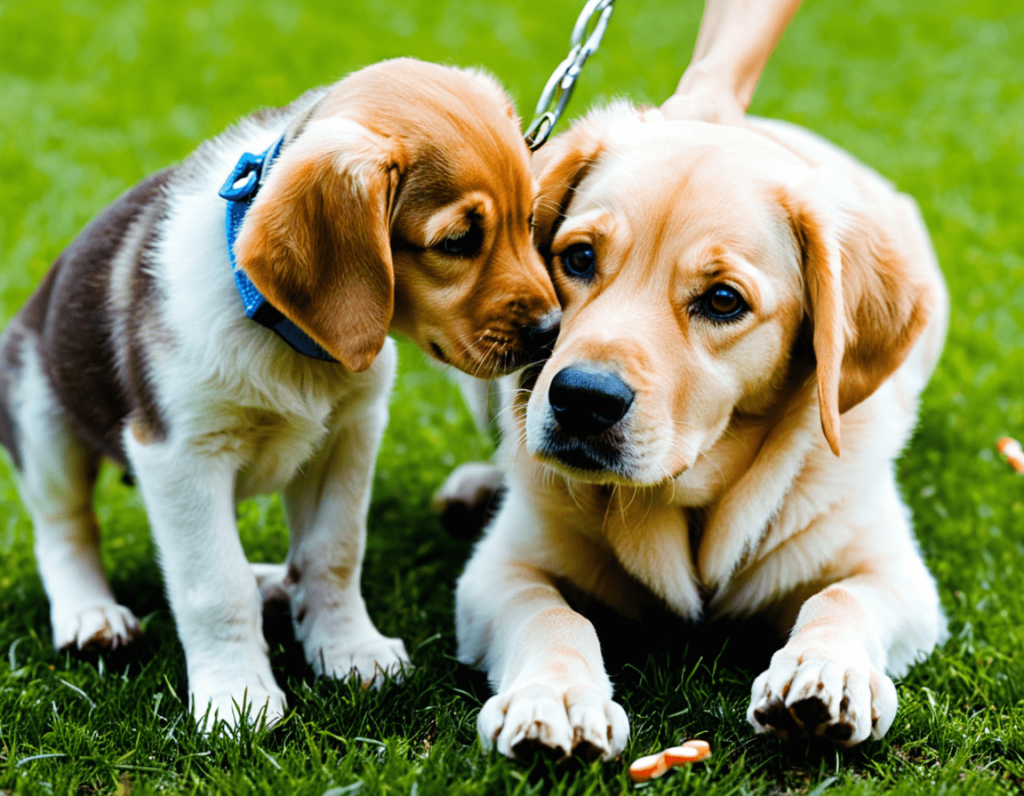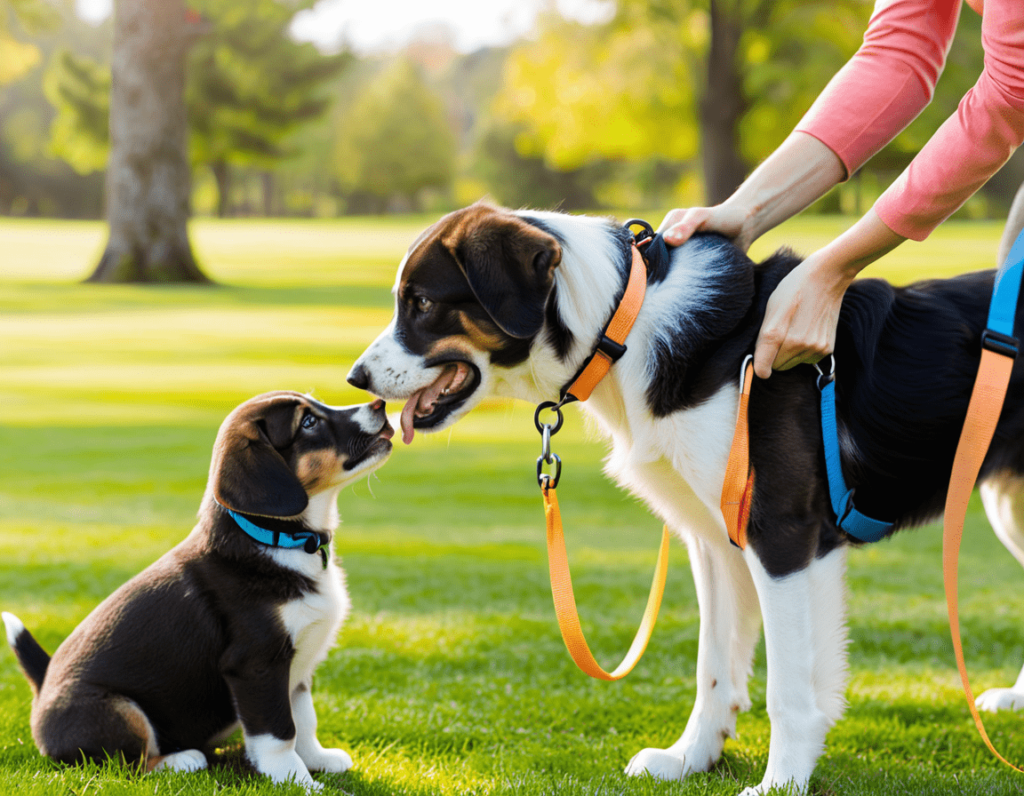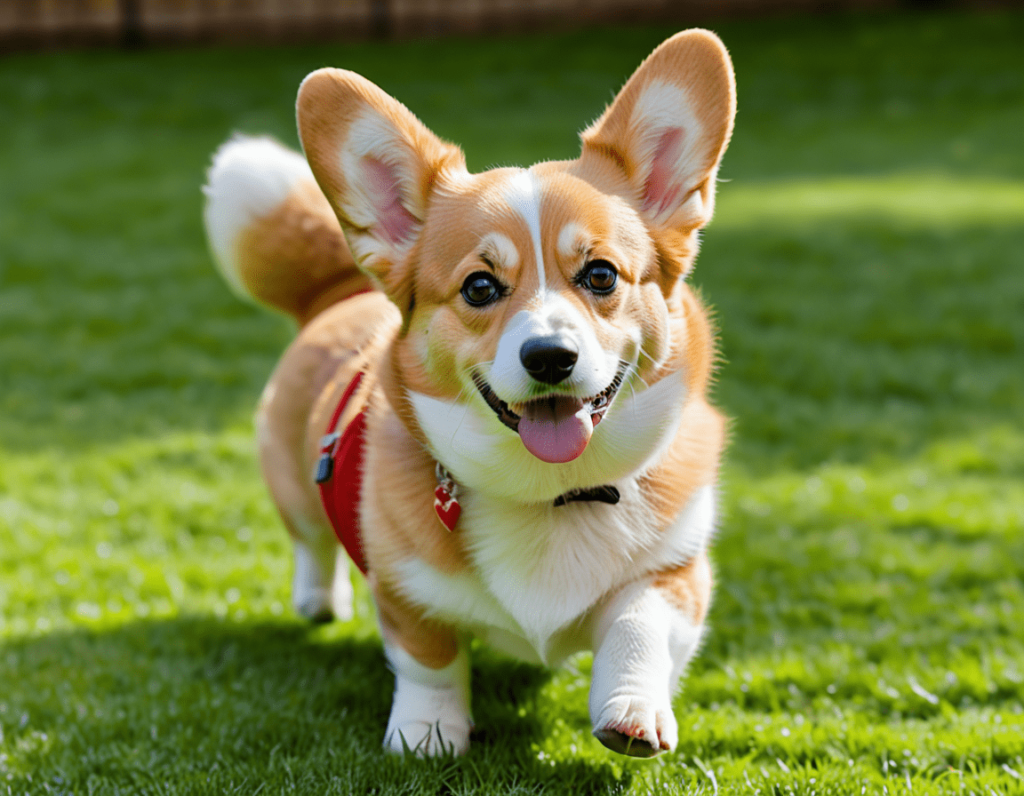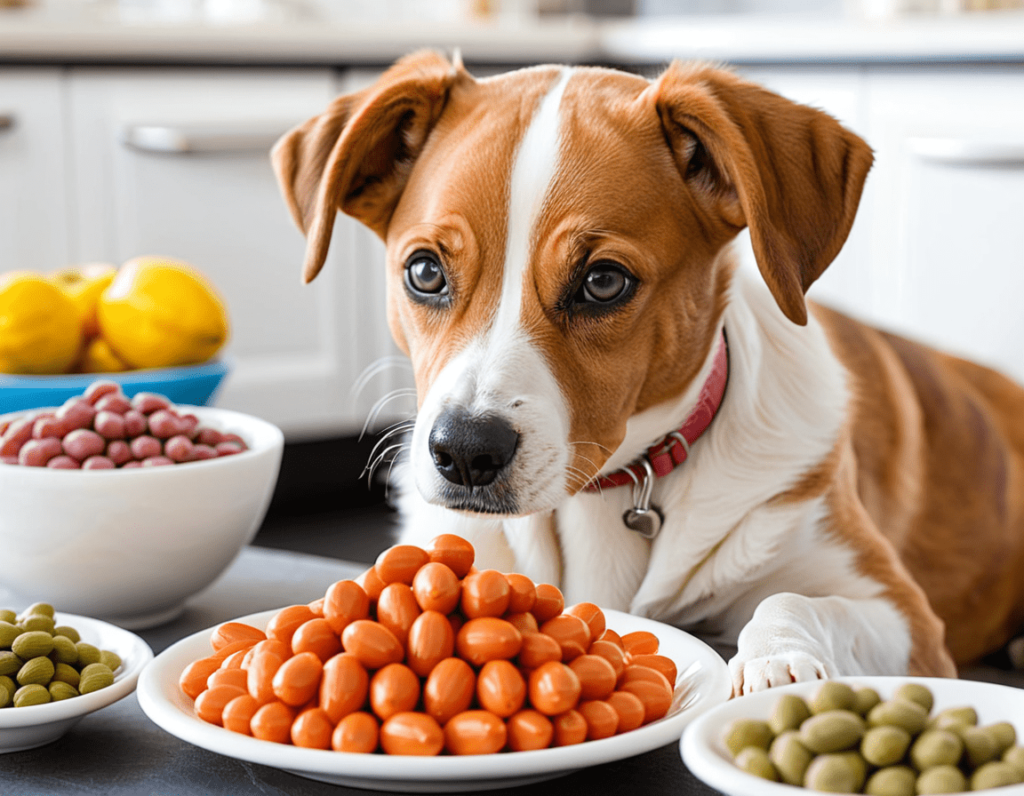Positive Reinforcement Training

Training your dog can feel like trying to teach a toddler to tie their shoes—sometimes it works, sometimes it doesn’t, and there’s a lot of shoe-flinging involved! But don’t worry; with positive reinforcement training, you can turn your furry friend into a well-behaved companion without the frustration. In this article, we’ll break down the basics of positive reinforcement training, why it works, and how you can get started with a few laughs along the way.
What is Positive Reinforcement Training?
Positive reinforcement training is a dog training method that rewards good behaviour to encourage its repetition. This approach focuses on rewarding desirable actions rather than punishing undesirable ones. Think of it as giving your dog a gold star for every good deed—except in this case, the star is a treat, a belly rub, or a favourite toy!
Humorous Insight: Remember, dogs don’t respond well to stern lectures. You won’t get very far with “Now, Fido, let’s discuss why chewing your shoe is unacceptable”!
Why Use Positive Reinforcement?
There are several reasons to choose positive reinforcement training over other methods:
Builds Trust: By rewarding good behaviour, you strengthen the bond between you and your dog. Your pup will associate you with positive experiences, making them more eager to learn.
Effective Learning: Dogs learn best when they see a clear connection between their actions and rewards. Positive reinforcement helps them understand what you want, making training quicker and more effective.
Reduces Fear and Anxiety: Unlike punishment-based training methods, positive reinforcement promotes a calm learning environment. This helps prevent fear and anxiety, making your dog feel safe and secure.
Funny Thought: If you’ve ever seen a dog get scolded, you know they can look like they’re plotting world dominance—or just wishing they could disappear!

How to Implement Positive Reinforcement Training
Ready to get started? Here are some simple steps to follow:
1. Choose the Right Rewards:-
Finding the right reward is key to successful training. Dogs are motivated by different things, so it’s important to discover what gets your pup’s tail wagging! Common rewards include:
Treats: Small, tasty treats work wonders, especially if your dog is food-orientated.
Toys: If your dog loves to play, use their favourite toy as a reward.
Praise: Sometimes, a simple “Good boy!” or a good scratch behind the ears can be the best reward.
Witty Reminder: If your dog would rather chase a squirrel than get a treat, you might need to step up your game!
2. Be consistent:
Consistency is crucial when training your dog. Use the same commands and rewards each time, so your dog knows what to expect. This will help reinforce the behaviour you want to see.
Humorous Note: Imagine if every time you went to a restaurant, the menu changed completely! You’d probably order pizza every time just to keep things simple!
3. Timing is Everything:
Reward your dog immediately after they perform the desired behavior. This helps them connect the action with the reward. For example, if you want your dog to sit, give them a treat as soon as their bottom hits the ground.
Witty Insight: It’s like giving your dog a high-five for not jumping on your guests right as they walk in. Timing is crucial; otherwise, they might think the treat is for the squirrel they just spotted outside!
4. Start with Simple Commands:
Begin with basic commands like “sit,” “stay,” or “come.” These simple behaviours are easy for your dog to learn and provide a great foundation for more advanced training later on.
Funny Thought: If you start with “roll over” and your dog just stares at you like you’ve lost your mind, maybe save that one for later!
5. Keep Training Sessions Short and Fun:
Dogs have short attention spans, so aim for brief training sessions—around 5 to 10 minutes. End on a positive note, even if that means giving your dog a treat for simply being cute!
Witty Reminder: Training should be fun! If your dog starts to look at you like you’re speaking Martian, it’s time to take a break and play fetch instead.
6. Use Clicker Training:
Clicker training is a popular method of positive reinforcement that utilises a small device that makes a distinct “click” sound. The click serves as a marker for the desired behaviour, followed by a reward. Here’s how to incorporate clicker training:
Get the Clicker: You can purchase a clicker at pet stores or online. They’re inexpensive and easy to use.
Charge the clicker: Before using it for training, associate the click sound with a treat. Click and immediately give your dog a treat. Repeat this several times until your dog understands that the click means a reward is coming.
Click and Reward: Once your dog performs the desired behaviour, click and reward them immediately. This reinforces the behaviour effectively.
Witty Insight: Think of the clicker as your dog’s personal applause meter. Every time they do something great, they hear “Bravo!” followed by a treat!
7. Gradually Increase Difficulty:
As your dog becomes more proficient with basic commands, gradually introduce more challenging behaviors. For instance, once your dog has mastered “sit,” you can move on to “stay” or “down.”
Break it Down: If the command is complex, break it into smaller steps. For example, if teaching “roll over,” start with “lie down,” then gently guide your dog through the motion, rewarding each step along the way.
Humorous Note: Just like us, dogs can struggle with complicated tasks. Remember your own confusion when learning to fold a fitted sheet? Patience is key!
8. Avoid Negative Associations:
Ensure that training sessions remain positive and free from stress. If your dog has a bad experience during training, it can lead to negative associations with the process.
Stay Calm: If your dog doesn’t get it right away, avoid raising your voice or showing frustration. Take a deep breath and remember that patience is essential.
Funny Thought: Picture your dog trying to train you on not stepping on their tail—now that’s a comedy show waiting to happen!
9. Incorporate Training into Daily Life:
Look for opportunities to reinforce training throughout your daily routine. Whether it’s asking your dog to sit before feeding them or practicing “stay” before opening the door, integrating training into everyday activities makes learning natural.
Use Commands in Context: This helps your dog understand that commands apply in various situations, making them more reliable.
Witty Reminder: If your dog learns that “stay” means they’ll get their dinner soon, you’ll have a champion listener in no time!
10. Know When to Seek Help:
If you find that training is proving more difficult than expected, or if your dog is displaying behavioural issues, it might be beneficial to seek the help of a professional trainer or behaviourist.

Common Mistakes to Avoid
As you embark on your positive reinforcement journey, here are some pitfalls to watch out for:
Rewarding the Wrong Behaviour: Make sure you’re rewarding the behaviour you want to encourage. If your dog sits but you accidentally give them a treat for barking, you may end up with a barking, sitting machine!
Overusing Treats: While treats are great, it’s important to mix in praise and affection to avoid turning your dog into a treat-obsessed monster!
Being Impatient: Learning takes time! If your dog doesn’t get it right away, stay patient. After all, nobody learnt to dance the Macarena overnight—well, maybe some people did, but your dog is not a professional dancer!
Conclusion
Positive reinforcement training is not just an effective way to teach your dog but also an enjoyable experience that strengthens the bond between you and your furry friend. With a little patience, creativity, and a lot of treats, you can raise a well-mannered pup who’s ready to take on the world (or at least the dog park).
Final Thoughts and Encouragement
Training your dog is a rewarding journey filled with laughter and love. Celebrate the small victories along the way, whether it’s a perfectly executed “sit” or a happy wagging tail. And remember, even the best trainers had to start somewhere. Keep a positive attitude, and you’ll soon find yourself sharing a fantastic relationship with your pup that’s built on trust and understanding.
Positive Reinforcement Training FAQs:
1. What is positive reinforcement training?
Positive reinforcement training is a dog training method that rewards desirable behaviours with treats, praise, or playtime. This encourages the dog to repeat those behaviours in the future, creating a positive learning environment.
2. Why is positive reinforcement training effective?
This method is effective because it builds a trusting bond between you and your dog. Dogs learn best when they associate good behaviours with positive outcomes, making them more likely to repeat those behaviours.
3. What types of rewards can I use?
Rewards can include treats, toys, praise, or physical affection. The key is to find what motivates your dog the most, as different dogs respond to different types of rewards.
4. How do I get started with positive reinforcement training?
Start with basic commands like “sit” or “stay.” Use treats or praise immediately after your dog performs the desired action. Keep training sessions short and fun, and gradually increase the complexity of the commands.
5. What if my dog doesn’t respond to training?
If your dog seems unresponsive, ensure that you are using high-value rewards that excite them. Additionally, consider reducing distractions during training and being patient, as some dogs may take longer to learn than others.
6. Can positive reinforcement training be used for behaviour problems?
Yes! Positive reinforcement can be effective in addressing various behaviour problems, such as jumping, barking, or chewing. Focus on rewarding the alternative behaviour you want to encourage rather than punishing the unwanted behaviour.
7. How important is timing in positive reinforcement training?
Timing is crucial. Reward your dog immediately after they perform the desired behaviour to create a clear connection between the action and the reward. This helps your dog understand what they did right.
8. Is it necessary to use a clicker in positive reinforcement training?
No, a clicker is not required, but it can be a helpful tool. The click sound acts as a clear marker for the behaviour you want to reinforce, making it easier for your dog to understand what they are being rewarded for.
9. How long should training sessions last?
Training sessions should be short—ideally 5 to 10 minutes. Dogs have short attention spans, and keeping sessions brief will help maintain their focus and enthusiasm.
10. What should I avoid while using positive reinforcement training?
Avoid punishing your dog for unwanted behaviours, as this can create fear and anxiety. Instead, focus on redirecting their behaviour and rewarding positive actions. Additionally, don’t overuse treats; mix in praise and affection to maintain their interest.
11. Can I use positive reinforcement training with older dogs?
Absolutely! Positive reinforcement training is effective for dogs of all ages. Older dogs can learn new commands and behaviours, especially when rewarded appropriately.
12. When should I seek professional help?
If you’re struggling with training or if your dog displays aggressive or severe behavioural issues, consider seeking help from a professional dog trainer or behaviourist who uses positive reinforcement methods.


